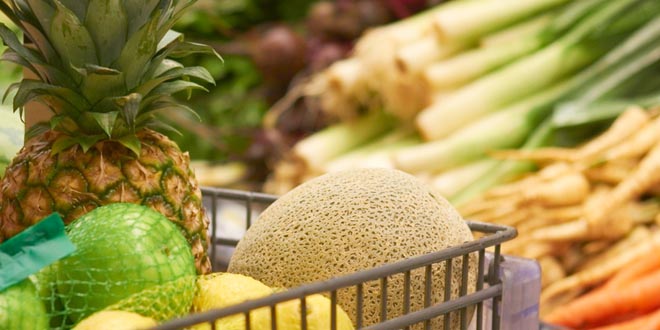
Healthy Grocery Shopping
The supermarket can be a real diet buzz kill, with the shelves lined with sugary, unhealthy options that one can’t help but drop into the shopping trolley. They’re flooded with prepackaged meals and snacks that manufacturers have invested thousands of R&D dollars into to make sure you grab them and ditch your planned fresh, healthy meal. Here are some tips to make grocery shopping healthier and get yourself and your family on a better meal plan.
1) Make a List
Before you enter the store have a list ready for the items you need. Going without a plan makes unhealthy shopping decisions more likely and you will buy with your eyes rather than your stomach. When making your list, break it down into different categories: Meat, Carbohydrates, Legumes and Snacks. If you’re weight conscious or have health issues like high cholesterol then stock up on lean proteins like chicken and fish and if you’re looking to build mass add red meat. In the carbs section opt for whole grains like brown rice, pasta, bread and whole wheat dough. Legumes and beans are healthy fibers and important for any diet so stock up and keep packaged snacks and sweets to a minimum. Add any supplements that your doctor has recommended but the idea is to create a list that suits your dietary needs and stick to it.
2) Read the Label
Not all packaged foods are created equal. Learn to read the labels and be knowledgeable about ingredients. If it’s more just letters and numbers than recognizable foods then you need to put it back. A high number of preservatives, artificial colors and flavors means the food item is highly processed. Chemicals and artificial ingredients offer no health benefits and are just used to preserve and flavor food, which is possibly the most harmful thing for your health. So remember the shorter the ingredient list, the better.
3) Shop Organic
We are lucky to live in a country where there are abundant fruit and vegetable stalls filled with healthy and delicious options which are as close to organic as we can get. Organic vegetables and fruits means no fertilized seeds, pesticides or herbicides were used to grow them. Organic meat would mean no antibiotics or steroids were given to the animal and the animal was treated humanely. Supermarket products which are labelled organic mean they are grown and bred on ‘organic’ farms that are routinely inspected and authorized by respective foundations. So anywhere you see ‘organic’ try to opt for that food, but try ditching the supermarket altogether for your five items of fruit and veg a day and head to your local market for the freshest options.
4) Calculate your Calories
Many companies selling candy bars, chips, wafers etc. want you to think you are consuming lesser calories by printing deceiving messages like “100 calories per serving.” This tricks you into thinking you’ve only had a 100 calorie snack but you didn’t look at the fine print and see that candy bar was actually two (or more!) servings! Hence you just consumed 200 calories from one candy bar. So the next time you check for calories on your can or candies, make sure you are checking serving size or serving per container as well.

